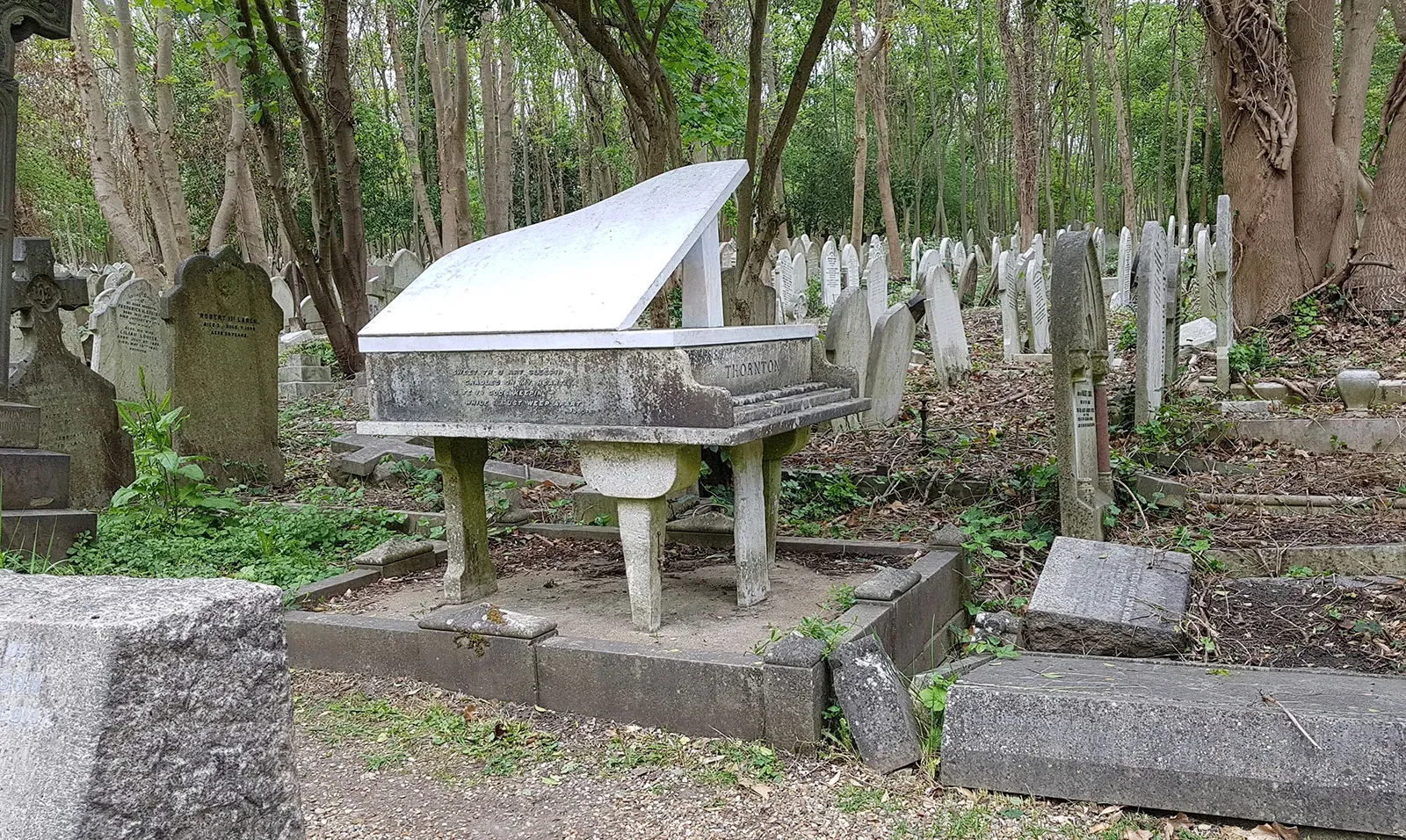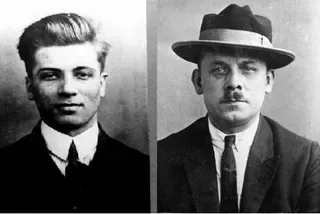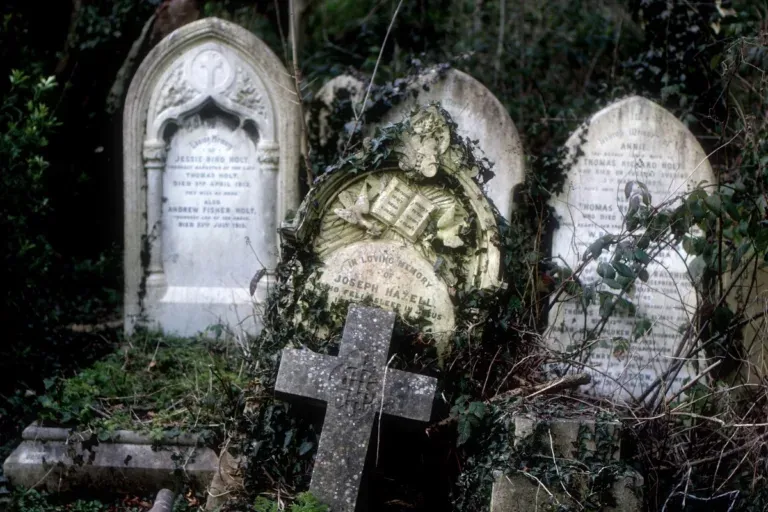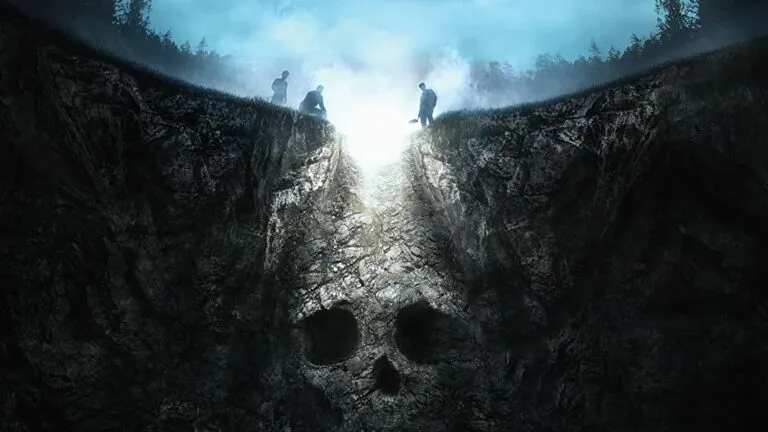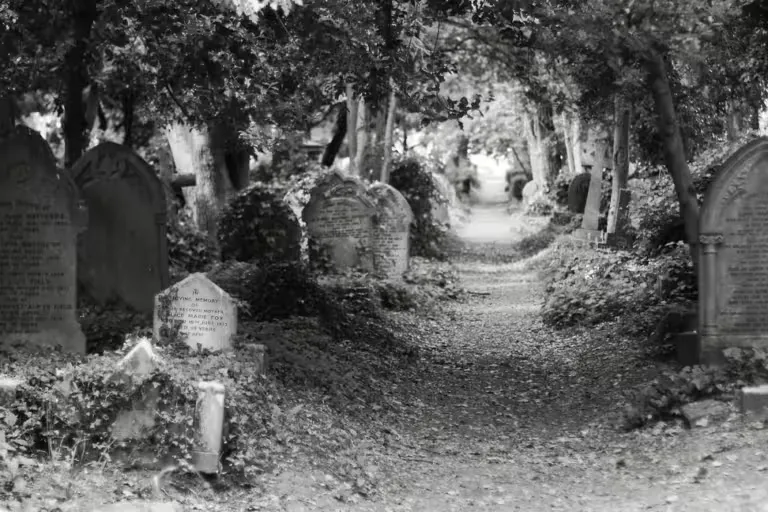Highgate Cemetery
Highgate Cemetery: A Journey Through History, Architecture, and Mystery
Introduction and Foundation
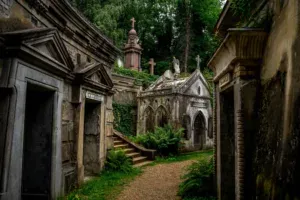 Highgate Cemetery, located in the Highgate district in northern London, is one of the most iconic and fascinating cemeteries in the British capital. Opened in 1839, it is part of the seven historic London cemeteries known as the “Magnificent 7“. This cemetery is renowned for its Gothic architecture, breathtaking landscapes, and its rich history intertwined with London’s culture and society.
Highgate Cemetery, located in the Highgate district in northern London, is one of the most iconic and fascinating cemeteries in the British capital. Opened in 1839, it is part of the seven historic London cemeteries known as the “Magnificent 7“. This cemetery is renowned for its Gothic architecture, breathtaking landscapes, and its rich history intertwined with London’s culture and society.
The Historical Context and the Need for New Cemeteries
During the 19th century, London faced severe overcrowding and sanitation problems, with urban cemeteries congested and lacking space. The increasing number of deaths and the shortage of burial space led to precarious sanitary conditions, with heightened risks of epidemics and diseases. In response to this crisis, new cemeteries were established outside the urban boundaries, and Highgate Cemetery was one of the answers to these challenges.
Founded as part of an initiative to create monumental cemeteries and garden cemeteries outside the city walls, Highgate was designed to meet the growing needs of an expanding London. It was the first of these cemeteries to be opened and quickly became a model for subsequent similar projects.
Design and Architecture
The design of Highgate Cemetery was entrusted to architect and landscape gardener Stephen Geary, who developed an innovative plan for a cemetery that was both a garden and a burial site. Geary adopted a Romantic Gothic style, reflected in the monumental architecture and ornamental structures of the cemetery.
The cemetery is divided into two main sections: the East Cemetery and the West Cemetery. The West Cemetery, which is the older and more well-known section, is famous for its Gothic Chapel and its sumptuous monuments. The Gothic Chapel, designed by Geary, is one of the focal points of the cemetery and features distinctive Gothic elements, including pointed arches and ornamental details.
The East Cemetery, opened in 1854, is characterized by a less elaborate but equally significant architectural style. This part of the cemetery houses numerous historic graves and monuments and serves as an important extension of Highgate’s original function.
One of the most distinctive features of Highgate Cemetery is its use of the natural landscape. The hills and valleys of the cemetery have been incorporated into the design, creating an environment that simulates a park and provides a sense of tranquility and beauty. The ancient trees, winding paths, and funerary sculptures contribute to creating a unique atmosphere that blends nature and architecture in an enchanting harmony.
Notable Figures Buried at Highgate
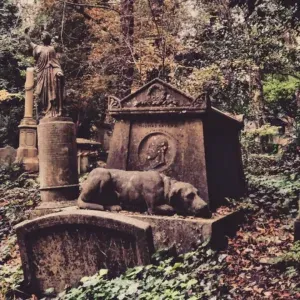 Highgate Cemetery is the final resting place of many notable figures, both historical and cultural, who have made a lasting impact on British society and beyond. Some of the most famous interments include:
Highgate Cemetery is the final resting place of many notable figures, both historical and cultural, who have made a lasting impact on British society and beyond. Some of the most famous interments include:
- Karl Marx: The German philosopher, economist, and revolutionary is buried at Highgate Cemetery in the East section. His grave, a grand monument with a statue of Marx created by sculptor John Bell, is one of the most visited sites in the cemetery. His burial at Highgate reflects Marx’s significance as an influential figure in political and social thought.
- George Eliot: The pen name of writer Mary Ann Evans, who is buried at Highgate along with her partner, George Henry Lewes. Eliot is known for her novels, including “Middlemarch” and “Silas Marner,” and her burial at Highgate represents a tribute to her contribution to English literature.
- Douglas Adams: The author of the famous science fiction series “The Hitchhiker’s Guide to the Galaxy” is buried in the East section of the cemetery. His grave is decorated with elements reflecting his creative spirit and sense of humor.
- Catherine Dickens: The wife of the famous novelist Charles Dickens is buried at Highgate, along with many other members of the Dickens family. Her grave is a landmark for admirers of Dickens and those interested in the life and work of the writer.
- William Friese-Greene: The British cinema pioneer and inventor is buried at Highgate. Friese-Greene is known for his work in creating cinematographic machinery and his contribution to the film industry.
A Cemetery and a Place of Mystery
Highgate Cemetery is also known for its associations with the supernatural and mystery. Over the years, the cemetery has been the center of numerous ghost stories and urban legends. During the 1960s and 70s, Highgate became famous for alleged vampire sightings and paranormal activity, attracting media attention and occult enthusiasts.
The so-called “Highgate Vampire” is an urban legend that claims a dark and eerie creature haunts the cemetery. These stories have contributed to creating an aura of mystery around Highgate and have attracted many curious visitors and ghost hunters. Although there is no concrete evidence of paranormal activity, the allure of these legends has added an extra layer of interest and intrigue to the cemetery.
Decline and Restoration
Like many historic cemeteries, Highgate has gone through periods of decline and neglect. In the 1970s, the cemetery was in a state of severe deterioration, with many graves damaged and areas of the cemetery neglected. The situation worsened due to grave thefts and vandalism.
In the 1980s, a group of volunteers and local supporters, including the Highgate Cemetery Trust, began working to restore and preserve the cemetery. These efforts included repairing damaged graves, cleaning and maintaining the gardens, and raising public awareness of Highgate’s historical importance. Today, Highgate is well-maintained and open to the public, with guided tours and events offering an opportunity to explore its history and heritage.
A Place of Reflection and Culture
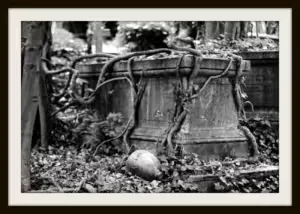 Highgate Cemetery continues to be an important cultural and historical site. Guided tours provide visitors with the opportunity to learn about the cemetery’s history, discover the graves of notable figures, and explore the unique architecture and landscape of the site. Night tours, which explore the ghostly legends and mysteries of the cemetery, are particularly popular among those seeking a more evocative experience.
Highgate Cemetery continues to be an important cultural and historical site. Guided tours provide visitors with the opportunity to learn about the cemetery’s history, discover the graves of notable figures, and explore the unique architecture and landscape of the site. Night tours, which explore the ghostly legends and mysteries of the cemetery, are particularly popular among those seeking a more evocative experience.
The cemetery also hosts cultural events, including lectures, concerts, and readings, which help to keep the memory of those buried there alive and celebrate Highgate’s legacy as a place of culture and reflection. The architectural beauty of the cemetery, combined with its rich history and mysterious allure, makes Highgate a place of enduring interest for London residents and visitors alike.
Conclusion: A Living Heritage
Highgate Cemetery is much more than just a burial site. With its rich history, Gothic architecture, and natural landscape, the cemetery represents a living heritage that continues to tell the stories of the people buried there and the city that embraced them. The combination of historical, cultural, and natural elements makes Highgate a fascinating place where the past and present intertwine in a unique and unforgettable experience.
 Subscribe to our YouTube channel
Subscribe to our YouTube channel
